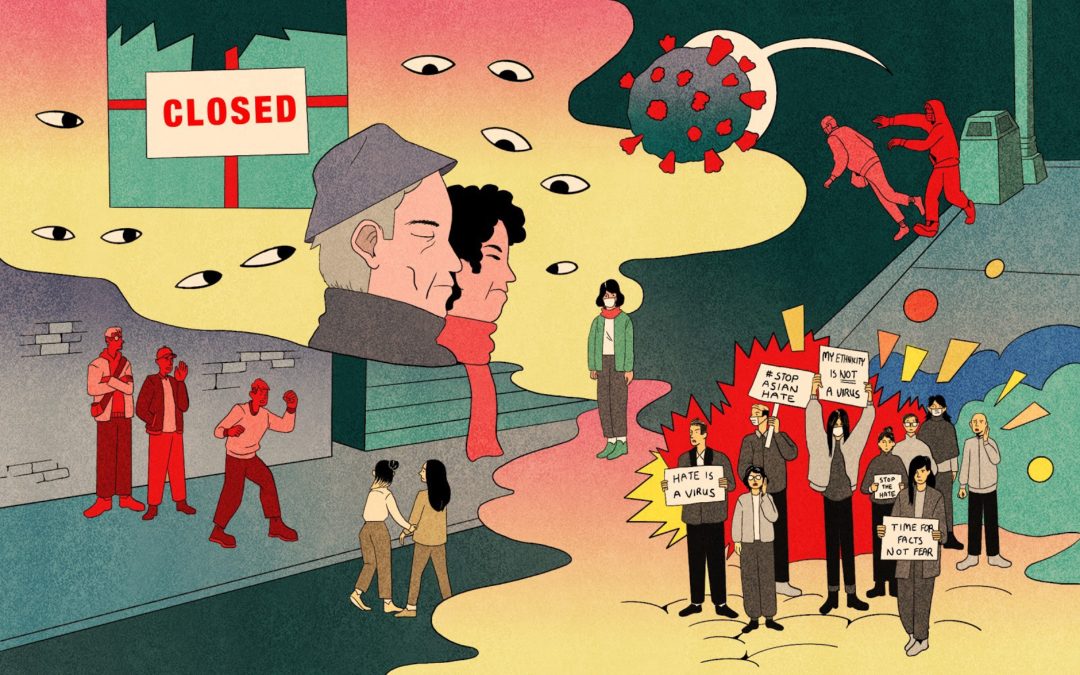
They work hard. They’re successful. They climb the social ladder. But they are also quiet. They keep a low profile. And, above all, they don’t complain.
According to Ellen Wu, history professor at Indiana University Bloomington, these are the principal elements of the “myth or stereotype of the model minority” that the majority of white Americans have fabricated about Americans with Asian roots.
“It’s really about an implicit comparison between Asian Americans and other minority groups, who push the limits, who complain and who cause problems, such as African Americans,” she said during a phone interview with La Presse. Wu believes that the truth behind this myth was revealed last week. When a 21-year-old white man shot and killed eight people, six of whom were women with Asian backgrounds, in massage parlors across Atlanta, Georgia, he forced many Americans to see and hear their Asian American neighbors for the first time.
“I think that many Americans don’t really pay attention to Asian Americans,” stated Wu, author of the book “The Color of Success: Asian Americans and the Origins of the Model Minority,” published in 2013, about the experiences of Asian immigrants in the United States. “It’s almost as if we’re in the background. You might know someone who does your nails or prepares your food in a restaurant, but you don’t really think about them.”
“There is this strange tension between the feeling of being invisible, but also hypervisible. And this hypervisiblity was exacerbated by the pandemic and the very racist association that people have made by calling COVID-19 the Chinese virus,” the professor added.
This association has coincided with a rise in racism toward Americans with Asian backgrounds, who represent the fastest growing ethnic group in the United States today. Since March 2020, nearly 3,800 hate crimes have been reported by the community, according to a report published by a coalition of Asian American groups a few hours before the shootings in Georgia.
Misogyny and Racism
In the aftermath of the shooting, Jay Baker, a white spokesman for the police, refused to speak about racism or hate crimes. Instead, he gave the impression of accepting the suspect’s version of events, in which he targeted three massage parlors in order to suppress a sexual obsession during the course of a “bad day.”
The myth of a docile and silent minority associated with Asian Americans was quickly shattered after the declaration. Many from the community spoke out to express their outrage at the officer’s comments and to remind people that misogyny and racism often go hand-in-hand for women with Asian backgrounds in the United States.
Many among them particularly spoke out about having been harassed in the street by men repeating the line spoken by a Vietnamese prostitute in broken English in the war film “Full Metal Jacket”: “Me so horny.”
“I was outraged, but not surprised,” Wu commented, alluding to the police spokesman’s announcement, “because the United States has this horrible habit of repeating this denial. For Asian American women, it doesn’t make sense to consider misogyny and racism as two different things because they are subjected to them at the same time.”
“I can’t understand the reasoning of the police, given the preconceived notions that people have had for a long time about Asian women, on what their bodies symbolize or on what they are supposed to offer. This reasoning doesn’t hold up,” the professor added.
Wu is one of the intellectuals and activists of Asian descent who spoke out across American media in the aftermath of the shooting in Atlanta. Like others, she believes that the event may contribute to bringing together the various parts of the community, which hesitates to recognize itself as such or to appropriate the label “Asian American.” “It is a concept which has only been around since the 1960s. And for many people, notably for new immigrants, it feels artificial.”
The Limits of Success
It has to be said that the Asian American community is not homogeneous. It is made up of Americans who can trace their origins back to more than 20 countries, who observe different religious practices and speak many different languages.
It is also within this ethnic group that you find the greatest economic inequality in the United States, according to a study published in 2016 by the Pew Research Center. The situation is in part explained by the Immigration Act of 1990, which allows American companies to hire foreign workers with special skills or qualifications through the H-1B visa. But successful visa application doesn’t necessarily translate to full acceptance of Asian Americans into American society. If they are still reluctant to adhere to a common identity, they share similar experiences that date back to the 19th century, according to Wu.
“What remains a constant throughout the generations is the refusal of American society, American culture, of government institutions to treat people of Asian descent as real Americans, like full members of our society.”
“So, even if people don’t necessarily come together under this banner of Asian American, there is a common experience of feeling like a foreigner,” the historian added.
Wu attributes this reality to the Chinese Exclusion Act of 1882, the first anti-immigration measure in the United States, and the wars waged by the U.S. in Asia during the 20th century. In 1942, one of these wars led to the internment of 120,000 Americans with Japanese roots.
“In some ways, Americans are conditioned to think of Asians, or Orientals or g****, to use the less polite terms, as sub-human. As simply an enemy, interchangeable, but threatening.”

Leave a Reply
You must be logged in to post a comment.